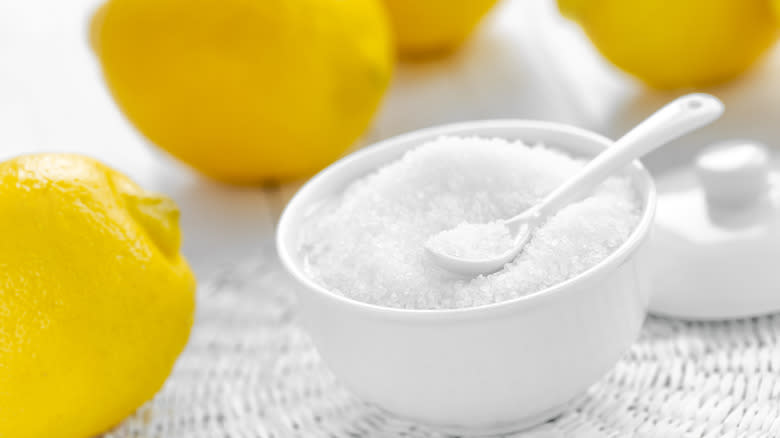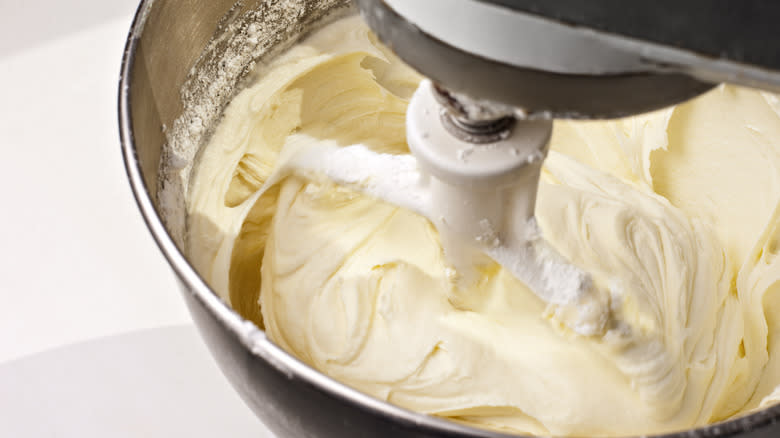Why Citric Acid Needs To Be A Part Of Your Seasoning Arsenal

To some, citric acid might sound like a scary chemical used exclusively in factories that make gummy tarantulas and Sour Patch Kids. On the contrary, it's a naturally occurring ingredient found in citrus fruits and other produce, first isolated from a lemon by the Swedish–German chemist Carl Wilhelm Scheele back in 1784.
Powdered citric acid, which is made by fermenting molasses and corn starch with the fungus Aspergillus niger, is easy to find — on the white market, to boot — and serves as a powerful flavoring and preservation agent in everyday kitchens. If you haven't already, you should add it to your rotation of pantry essentials.
Beyond its role in mouth-puckering confections, the flavorless ingredient can step in as a versatile workhorse for sweet and savory dishes alike. (And yes, it's also used in some cleaning solutions, but so is baking soda.) But before you go sprinkling it everywhere, there are a few things to keep in mind when using citric acid in your home cooking.
Read more: What These Imitation Foods Are Actually Made Of
Give Desserts A Lift

First things first: When you get your hands on a container of citric acid, resist the urge to taste it with a spoon. According to pastry chef Paola Velez, eating it straight can damage tooth enamel and strip away taste receptors on the tongue. "When I use it as its own thing with sugar, it's a very small, small quantity, " she told Food & Wine.
Dental warnings aside, citric acid is a great ingredient for bakers and dessert lovers to have on hand. Pastry chef Natasha Pickowicz, previously of NYC's Café Altro Paradiso and Flora Bar, even goes so far as to list it as a "desert-island ingredient" in her cookbook "More Than Cake." As she put it in New York Magazine, "Its secret power is making dishes taste more vibrant and like themselves." Use it to make zesty buttercream frosting, add it to fruity treats like jams, curds, and jellies to "[stop the] bad microbes" that might form during the canning process, per Velez, or try it as a color-brightening agent in dull-looking syrups and pie fillings.
The Savory Side

If you're not much of a sweets person, you should still consider keeping citric acid in your pantry. Its lack of flavor makes it a fantastic pH-balancing substitute for lemon juice or vinegar in homemade cheeses like ricotta and paneer. Likewise, citric acid dissolved in water can replace vinegar in borscht, tomato soup, sautéed vegetables like cabbage and hearty greens, brine-marinated fried chicken, extra-kicky lemon pasta, and beyond. It's the way to go when you don't want the flavors of a dish to be overpowered by the flavors of an acidic ingredient.
If using citric acid in a main course sounds like too much of a commitment, put it toward something stackable, like punchy popcorn, tangy dill-pickle chips, or perfectly balanced guacamole that will stay green and vibrant for longer. At the very least, you'd be remiss not to add a punch to your next batch of margaritas.
Read the original article on Daily Meal.

